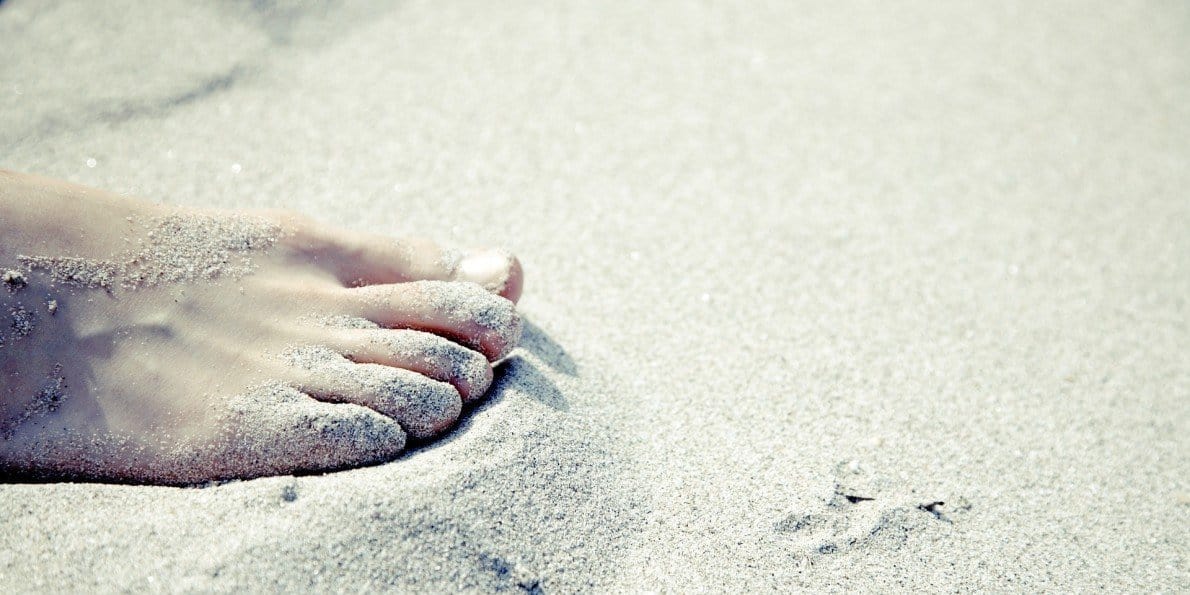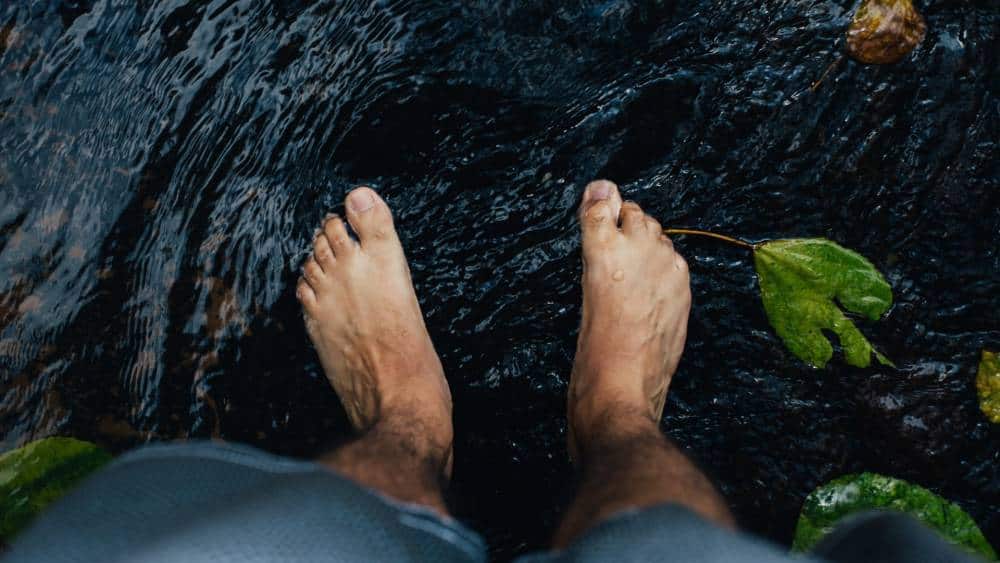
If you’re in the habit of cutting your toenails too short or wearing tight shoes – chances are you’ve had an ingrown toenail. I’ve had one once and the experience made me change my foot care habits completely! It can be so painful, I never want an ingrown toenail again!
What appears to be a minor ailment can actually become quite serious. If you don’t attend to your ingrown toenail, it can become infected and the infection can spread to your whole body – which is life-threatening. If you’ve just noticed the beginnings of an ingrown toenail, don’t worry, there are ways to deal with it at home. Here’s how to get rid of an ingrown toenail the natural way.
What Is an Ingrown Toenail?
 Let’s start with the basics – what exactly is an ingrown toenail? Well, it’s a very common condition in which the corner or side of your toenail grows into the surrounding flesh. Eventually the nail will pierce the skin, leaving you with an open wound at high risk of infection. (source)
Let’s start with the basics – what exactly is an ingrown toenail? Well, it’s a very common condition in which the corner or side of your toenail grows into the surrounding flesh. Eventually the nail will pierce the skin, leaving you with an open wound at high risk of infection. (source)
Symptoms of an Ingrown Toenail
It will usually be quite obvious when you have an ingrown toenail as the corner of the toenail will visibly be growing into the surrounding flesh. There are some more symptoms to look out for too:
- Pain at the edge of the nail – it will get worse the longer you leave it
- Redness, throbbing and swelling around the toenail
- Tender toe making it difficult to walk/wear shoes
- Leaking fluid or blood from the wound
(source)
How to Avoid Ingrown Toenails
The best solution for an ingrown toenail is to avoid it in the first place. Here are some tips to keep your toes healthy and happy:
- Cut your nails straight across and not too short
- Inspect your feet daily, especially if you injure a toe
- Never wear shoes that are too small for you
- Use a pumice stone regularly around the toes to avoid hard skin
- Avoid pedicures
- Never remove the cuticles from your toenails

How to Get Rid Of an Ingrown Toenail the Natural Way
There are some prerequisites to all of these methods to get rid of an ingrown toenail the natural way. First of all, you must thoroughly clean your foot with an antibacterial soap, and then clean your toe again with rubbing alcohol. This is to minimise risk of infection.
Your tools (tweezers, nail clipper) must be sterilized with rubbing alcohol or boiling water. After you’ve done that, you have a few different options, most of which work by softening the skin in which the nail is embedded.
1. Warm Water Soak
Soaking your feet in a bowl of warm water alone will soften the skin around your toenails. You should do this for 20-30 minutes twice daily. Some substances you can add to the water for antibacterial or extra softening effect are:
- 1tbsp Epsom salt
- 1tbsp table salt
- ½ cup hydrogen peroxide
- A few tbsps apple cider vinegar
2. Natural Oils
Apply a mixture of natural oils to the affected toenail twice daily to reduce infection, relieve pain and soften the skin. You should dilute these with olive oil before using (1 drop in 1tbsp of olive oil). Some good oils are:
- White flower oil
- Tea tree essential oil
- Lavender essential oil
- Oregano essential oil
3. Lemon
Place a thin slice of lemon over the affected area. Tie it onto the toe with gauze and leave overnight. Replace twice a day. The acidity of the lemon will fight infection and soften the skin.
4. Lotion
Apply lotion, petroleum jelly or moisturiser to the ingrown toenail at least twice daily to soften skin. Make sure to use a non fragranced brand with no rough particles.

After you have softened the skin, you can use a tweezers to try and carefully separate the nail corner from the flesh where it has become embedded. If you are successful, you can place a piece of sterile cotton under the nail to keep it from becoming embedded again (change this cotton daily) or use a nail clipper to clip excess nail material.
Next, clean away any blood or fluid and use rubbing alcohol to sterilize the feet again. Try to avoid wearing socks and shoes at home, instead wear open-toe slippers. Apply antibacterial cream twice a day
When to See a Doctor
Of course it’s best to see a doctor rather than trying to get rid of an ingrown toenail at home. If you don’t see any improvement after 3 days with the above methods, you should get it checked out.
If you have diabetes or notice symptoms of infection, don’t even try treating it at home. Diabetics are at higher risk of complications with foot injuries and pain may not be as apparent due to poor circulation.
Symptoms of infection include: severe pain, pus, abscess (fluid filled blister), severe swelling or redness and fever or flu-like symptoms. If you notice any of these signs, see a doctor immediately as the infection can spread and become life-threatening. You will most likely need an antibiotic. (source)
Conclusion
I hope these tips on how to get rid of an ingrown toenail the natural way have been helpful for you. I’d love to hear how you get on with them in the comments and if you know any other methods let me know too.
Most of us will suffer from an ingrown toenail at least once in our lives. Although ingrown toenails are usually not serious, they can be really painful and inconvenient. Be sure to heed the tips to keep your toes healthy and happy to make sure you minimise the risk.
Leave a comment